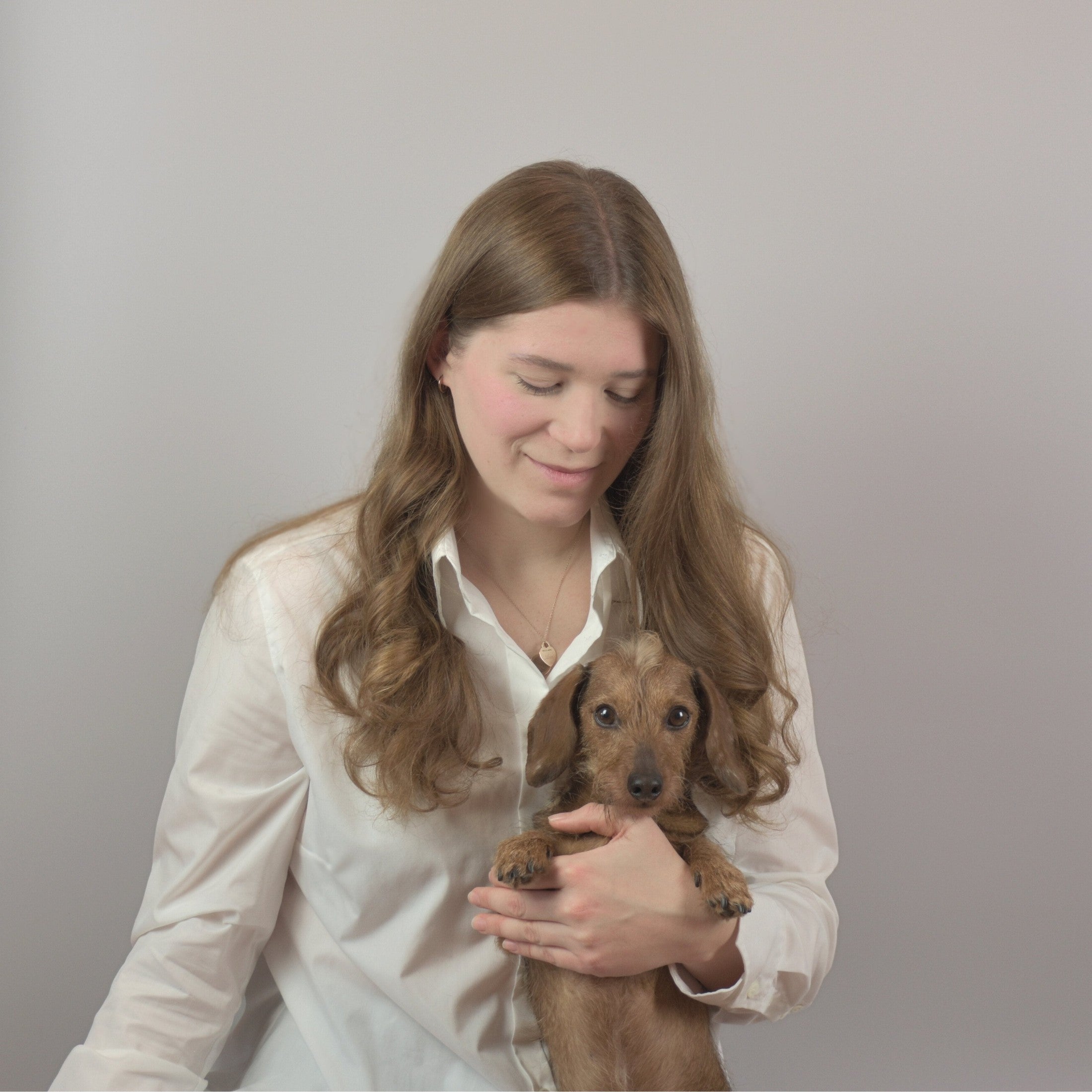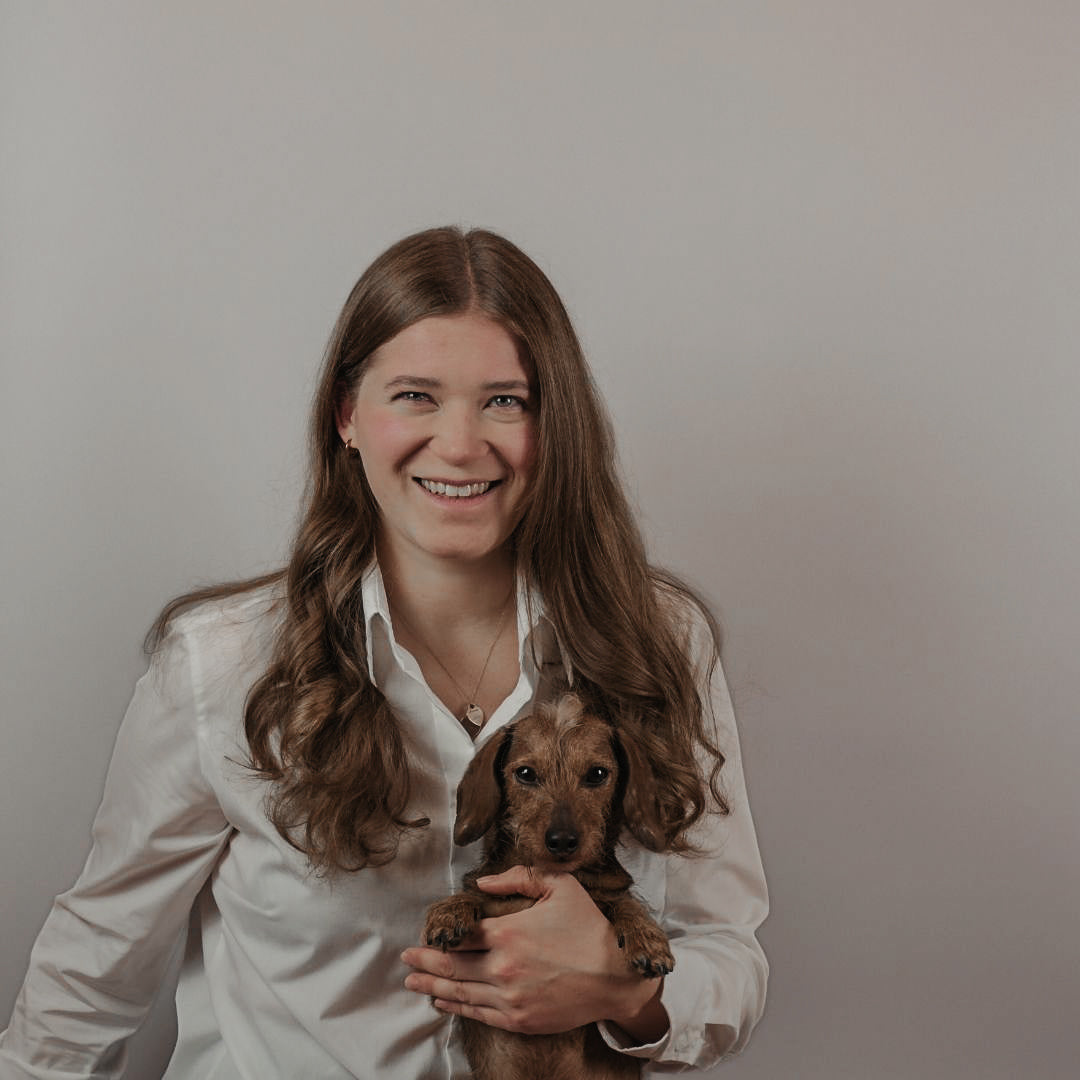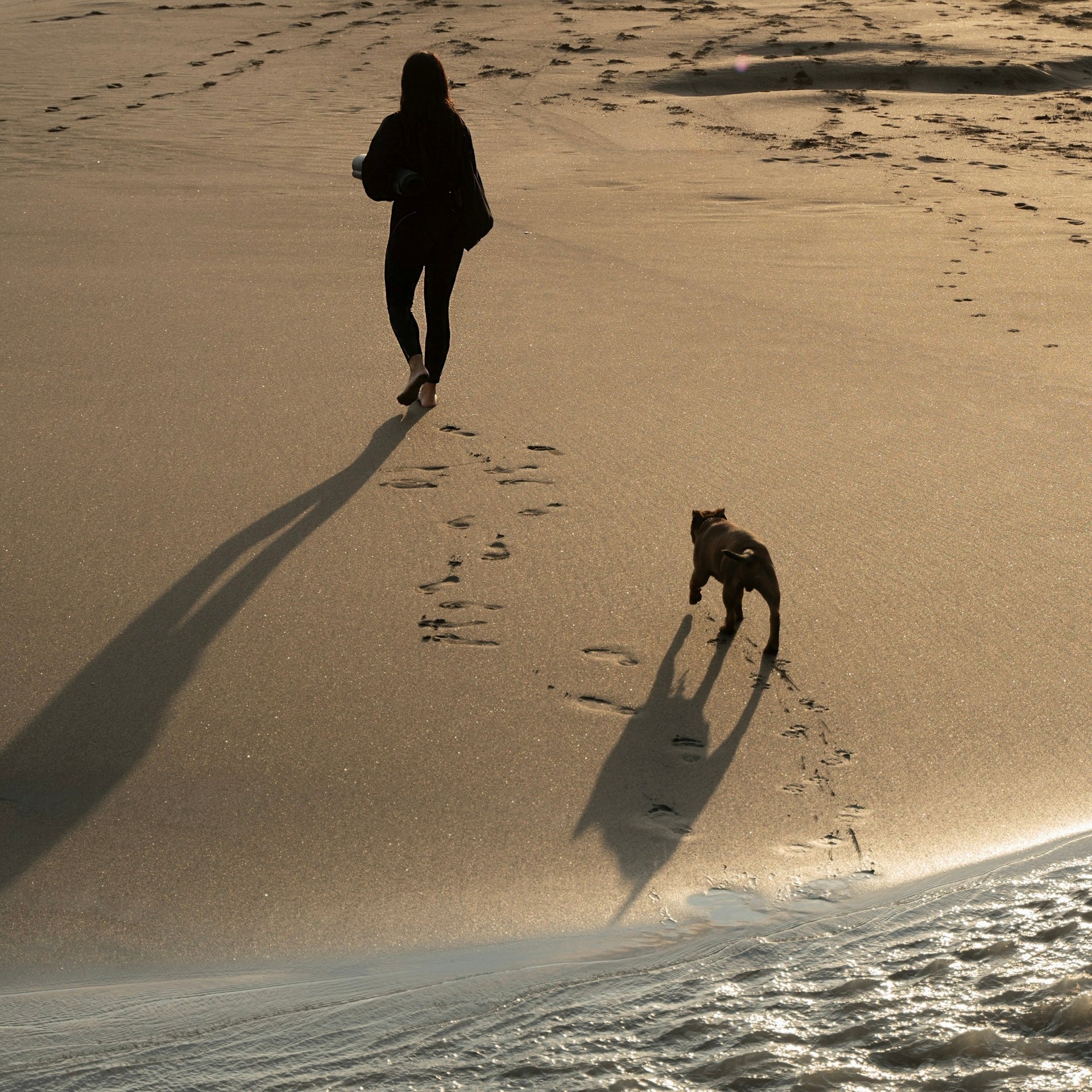There are trips that stay with you, even though they weren't outwardly spectacular. No outstanding sights, no perfectly curated day, no photos that would later get a thousand likes. And yet, they leave something behind.
For me, it was an early morning in South Tyrol, walking with Schoko along a narrow forest path. The air was cool, smelling of damp moss, and the sun was slowly rising over the mountain ridge. Schoko walked a little ahead, turning around every now and then as if checking to see if I was still there. It was an incredibly simple moment—but that's precisely what made it so special. There was no rush, no distractions. We simply walked. Slowly. Mindfully.
That was the first time I realized how much dogs can change the pace of a journey – if you allow it. And how much calmer, more open, and more honest the journey becomes when you embrace it. This realization profoundly influenced me later on: in my own travel style, in my understanding of well-being, and ultimately in the vision that PAWLII embodies today.
“Slow travel” isn’t a method, but an attitude. A way of life that quietly works against the pace of our times – and which unfolds a surprising depth, especially when traveling with a dog. This article aims to illustrate precisely that: why slow travel is so good for your dog, why you yourself will also benefit, and how to practically implement it in everyday life while traveling.
Table of contents
- What does "slow travel with a dog" mean? – Definition & relevance of the slow travel concept
- Why slow travel is so valuable for dogs – needs, stress levels & well-being
- This is how people also benefit: serenity, presence & deep relaxation through slow travel.
- Practical application: How to travel slowly – routines, breaks & planning without pressure
- Slow travel: Accommodation, transport & daily activities in the slow travel style
- Tools & Essentials for relaxed travel with your dog – comfort, safety & structure
- Conclusion: Why Slow Travel is an attitude towards a more relaxed coexistence
Key take-aways
- Slow travel strengthens a dog's inner peace and noticeably reduces stress signals.
- People also benefit emotionally and physically from a slower travel style.
- Slow travel does not mean fewer experiences, but deeper and more conscious experiences.
- Suitable accommodation, reliable transport, and clear routines greatly support this style.
- The right equipment and recurring routines facilitate orientation and well-being.
What does "slow travel with a dog" mean? – Definition & relevance of the slow travel concept
The term "slow travel" is increasingly appearing in magazines, travel blogs, and social media – but its meaning is much more than a trend. It describes a conscious departure from a travel style characterized by packed itineraries, rapid changes of location, and maximum efficiency. For many people, travel has long since become just another item on the to-do list: something to be planned, optimized, and then completed. At this pace, however, the essence of travel is lost: arriving, experiencing, and enjoying.
Dogs immediately detect this acceleration. They sense restlessness, register constant changes, and struggle to relax in such a fast-paced environment. Anyone who travels with a dog quickly learns that "fast" rarely works harmoniously. Slow travel addresses this: it's about giving the journey the same value as the destination. It's a return to a style of travel that focuses not on ticking things off a list, but on experiencing – not on control, but on presence.
Traveling slowly means taking time for a new neighborhood, for the smell of a bakery in the morning, for a view of a landscape that would otherwise have escaped us. It means not just visiting places, but truly experiencing them – and that's exactly what dogs do anyway. At this shared pace, something like a quiet understanding develops between human and animal.
Why slow travel is so valuable for dogs – needs, stress levels & well-being
Dogs experience the world through their senses – more intensely, more directly, and often more unfiltered than we do. Every new environment is an information overload for them. New smells, different sounds, changing surfaces, and movement patterns must be processed before they can feel safe. At the same time, dogs depend on their humans to provide them with orientation. But this only works if the human themselves exudes calmness – and calmness doesn't arise from hectic activity.
Slow travel gives dogs the time they need to build inner stability. When they repeatedly walk the same routes, hear the same sounds multiple times, or regularly visit the same place, familiarity develops. This familiarity is key to reducing stress and truly relaxing. Many dogs sleep poorly while traveling because they are constantly scanning for danger. Only when the daily rhythm slows down can they reach the deep sleep phases that are so important for regeneration.
Another important point is the bond. Dogs naturally seek closeness to their humans – especially when they are in unfamiliar surroundings. If we travel too quickly, we lose this closeness in the hustle and bustle. When we slow down, a shared rhythm develops. You look at each other more often, wait for one another, and move as a team. This has a direct impact on trust and makes traveling not only pleasant for dogs, but also emotionally enriching.
This is how people also benefit: serenity, presence & deep relaxation through slow travel.
Traveling slowly changes not only a dog's perception, but also a human's. Many travelers report that a slower pace feels like taking a deep breath after a period of tension. When scheduled activities are eliminated, space opens up – space for conversations, for moments, for slow, deliberate thoughts. The day no longer feels like a race, but like a river unfolding naturally.
Having a dog by your side amplifies this feeling. Dogs live so naturally in the moment that they almost unconsciously draw us in. A dog stops because a blade of grass interests it – and suddenly you discover for yourself how beautiful this place truly is. It is these seemingly insignificant moments that become the most precious when traveling at a slower pace.
This pace also has a physical effect. Stress levels decrease, breathing becomes calmer, and recovery sets in sooner. Many people report that for the first time in a long time, they felt truly regenerated on vacation – not despite the dog, but precisely because of it. Slow travel sharpens our focus on what really matters: connection, tranquility, and mindful experiences.
Practical application: How to travel slowly – routines, breaks & planning without pressure
For slow travel to be more than just a nice concept and actually work in everyday life, a conscious approach to planning is essential. The first step is to want less. Limiting yourself to one or two highlights per day automatically creates a sense of ease. This gives dogs ample time to arrive, explore their surroundings, and move around at their own pace.
A small but crucial point is taking real breaks. Many travelers get out of the car, walk a few steps, and then continue driving. For a dog, however, this isn't real rest. A break means sitting, breathing, and calming down. It means giving the dog—and yourself—the opportunity to process the impressions. These moments may seem invisible, but they significantly change the overall travel experience.
Rituals provide additional support. A dog recognizes security through patterns. If the same routine is followed in the morning or the same blanket is unrolled in the evening, a sense of continuity develops. These repetitions not only provide stability for the dog, but also for the human, because less improvisation is required.
Flexibility is also crucial. A slow travel style thrives on the ability to adapt plans. If a dog signals that it's tired, it's worth staying longer in one place. If it particularly likes a spot, there's no need to move on. Slow travel takes the pressure off and replaces it with intuition – and that makes traveling easier and significantly more enjoyable.
Slow travel on the go: Accommodation, transport & daily activities in the slow travel style
The choice of accommodation shapes the entire character of a trip. Places that exude tranquility and offer space make it easier for dogs to settle in. An apartment offers maximum privacy and a consistent routine – ideal for sensitive dogs. Boutique hotels, on the other hand, combine comfort with a high level of service, which is particularly practical if you yourself are looking for a break from everyday life and your dog is well-socialized. Mountain cabins or country hotels offer plenty of nature, few distractions, and a clear rhythm that almost automatically has a calming effect.
This overview serves as a guide:
| Accommodation type | Advantage | Which dogs are suitable? |
|---|---|---|
| Apartment | full control, calm atmosphere | sensitive dogs, routine lovers |
| Boutique hotel | Comfort & Service | relaxed, socially stable dogs |
| Mountain huts | Pure nature, few stimuli | Dogs with a strong urge to move |
| Country Hotels | large outdoor areas | Dogs that need a lot of space |
Transportation also plays a role. Fewer stops, clear routines, and familiar sounds ensure that the dog doesn't feel like it's constantly on the move. The transport solution serves as a "mobile retreat"—whether a bag, backpack, or travel bed. If this place is filled with familiar scents, a piece of home travels with the dog.
The daily routine, following the slow-travel style, doesn't adhere to a rigid pattern, but rather a natural balance. In the mornings, dogs are free to explore, run, and satisfy their curiosity. Midday offers a longer rest period, allowing the body and nervous system to relax. The afternoons are filled with gentle, non-exercising activities. In the evenings, recurring routines help everyone wind down. This creates a rhythm that feels harmonious, allowing both human and dog to truly arrive and unwind.
Tools & essentials for relaxed travel with your dog – comfort, safety & structure
A key element of slow travel is a thoughtful selection of essentials. It's not about packing a lot, but consciously choosing what's truly necessary. A familiar blanket, a comfortable bed, a high-quality collar or harness – all of these create continuity in a new environment for the dog. The more familiar the items, the easier it will be for the dog to settle down.
Even portable routines are valuable. For example, always using the same treat container or spreading out a blanket first thing after arriving sends clear signals. Dogs recognize these patterns and quickly adapt. This creates a sense of control – something incredibly helpful, especially when traveling.
Comfort plays an equally important role. A well-ventilated means of transport, a sturdy bag, sufficient shade, and weatherproof clothing for the dog ensure that stress doesn't even arise in the first place. Slow travel isn't just about how you travel, but also what you travel with. And the better equipped both human and dog feel, the easier it is to slow down.
Conclusion: Why Slow Travel is an attitude towards a more relaxed coexistence
Slow travel is far more than a trend. It's a conscious decision against overload and for depth. Dogs show us how valuable a relaxed pace can be – and how much of that we can incorporate into our own daily lives. When we allow ourselves to see travel not as a project, but as a living experience, a sense of togetherness emerges that is quieter, clearer, and more harmonious.
Slow travel is an attitude that manifests itself not only in travel but also in everyday life. It's a way of looking at the world that is less about haste and more about mindfulness. It's a way of traveling together that fosters closeness, tranquility, and quality of life.






